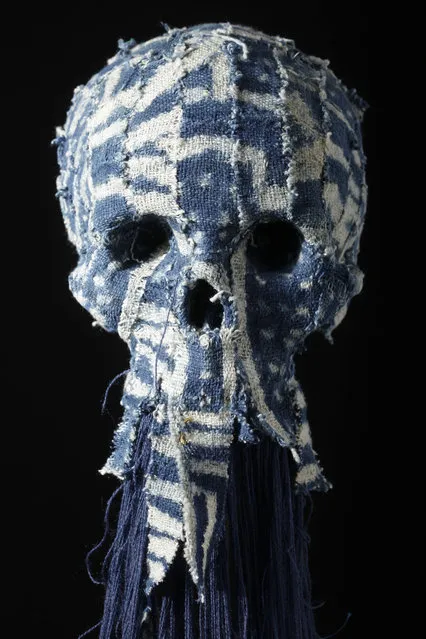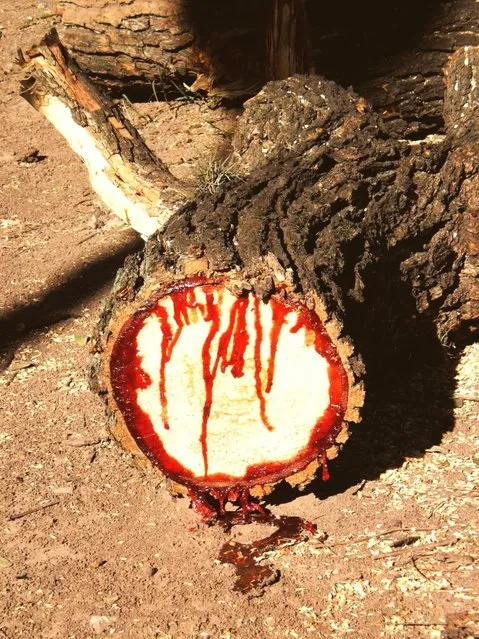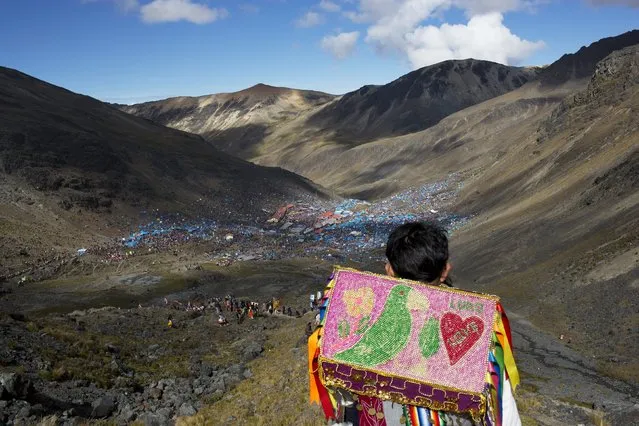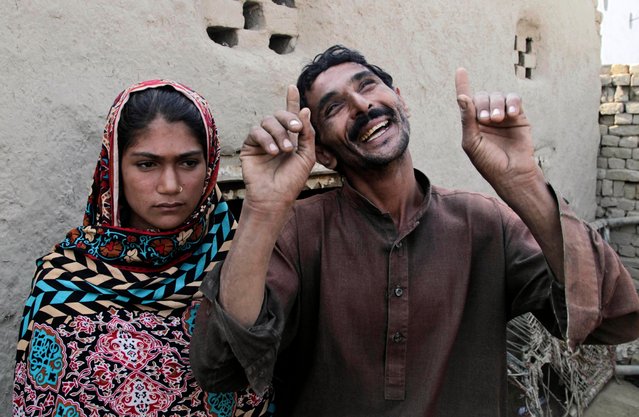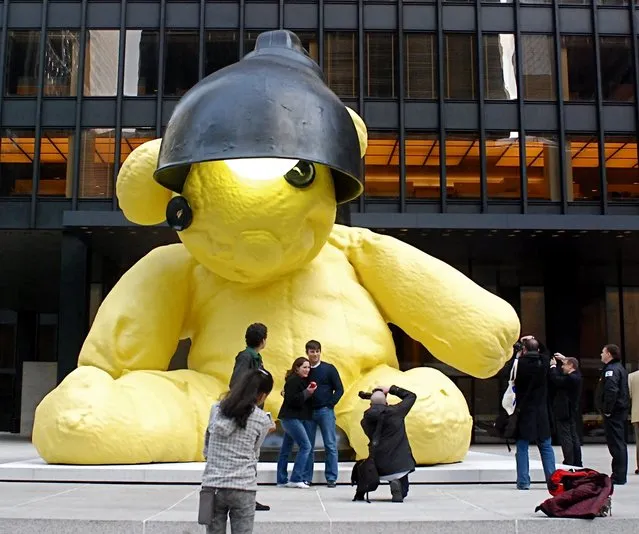
The giant yellow 20-ton bronze teddy bear has been set up by Christie's outside the Seagram Building along Park Avenue. Created by New York-based Swiss artist, Urs Fischer, the enormous sculpture that has received mixed reviews, is getting auctioned off at Christie's next month. The black button-eyed, 23-foot-tall yellow teddy bear is "Untitled (Lamp/Bear)."
05 Apr 2014 12:14:00,post received
0 comments

